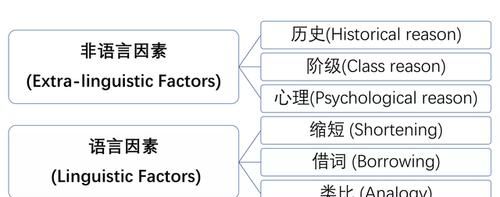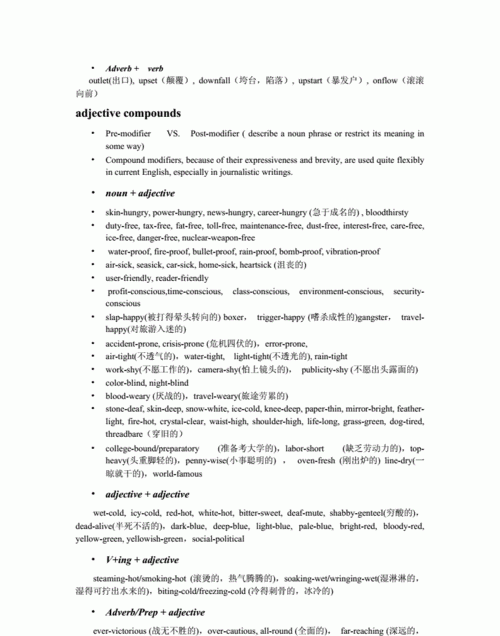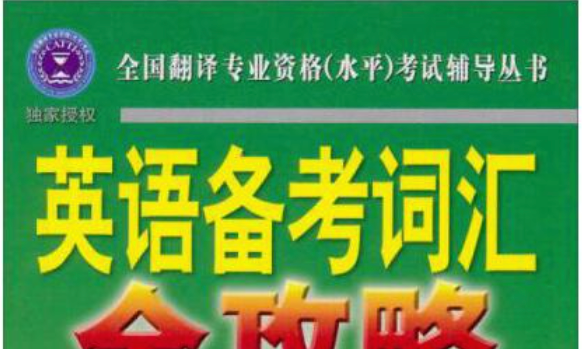本文目录
中考英语知识点总结归纳
英语是一门非常看重积累的学科,对于高频的知识点,初中生一定要熟练掌握,下面我为大家总结了中考英语知识点必背,仅供大家参考。
初中英语知识点
句型1:There+be +主语+地点状语/ 时间状语
There's a boat in the river.
河里有条船。
句型2:What's wrong with+sb. / sth. ?
What's wrong with your watch?
你的手表有什么毛病?
句型3:How do you like...?
How do you like China?
你觉得中国怎么样?
句型4:What do you like about...?
What do you like about China?
你喜欢中国的什么?
一般现在时的用法
1) 经常性或习惯性的动作,常与表示频腮度的时间状语连用。时间状语: every…, sometimes, at…, on Sunday。例如:
I leave home for school at 7 every morning. 每天早上我七点离开家。
2) 客观真理,客观存在,科学事实。例如:
The earth moves around the sun. 地球绕太阳转动。
Shanghai lies in the east of China. 上海位于中国东部。
3) 表示格言或警句。例如:
Pride goes before a fall. 骄者必败。
注意:此用法如果出现在宾语从句中,即使主句是过去时,从句谓语也要用一般现在时。
英语take短语
1。 take up 占据(时间,空间)
2。 take after 与(父母等)相像
3。 take place 发生
4。 take care 小心,当心
5。 take off 脱下,起飞
6。 take out 拿出,取出
7。 take away 拿走,带走
8。 take down 取下
9。 take it easy 从容,不紧张
10。 take care of 照顾,照料
11。 take a rest 休息一下
12。 take a shower 洗澡
以上就是我为大家总结的中考 英语知识点 必背,仅供参考,希望对大家有所帮助。

高二英语必记的知识要点有哪些
习是快乐的,学习是幸福的,虽然在学习的道路上我们会遇到许多困难,但是只要努力解决这些困难后,你将会感觉到无比的轻松与快乐。让我们一起寻找那份属于你的快乐,以下是我给大家整理的 高二英语 必记的知识要点,希望能助你一臂之力!
高二英语必记的知识要点1
一.重点词汇
1.preference n.偏爱;优先eg:Wine or beer?which is your preference?要葡萄酒还是啤酒?你比较喜欢哪一样?
I have a preference for French films.我更喜欢法国电影。
相关链接:prefer吨更喜欢preferable adj.更好一些(和to连用) preferably ado.是用法拓展.have a preference for偏爱…… show/gire(a)preference for偏爱……
have a preference of sth.to/over,..宁要某物而不要另一物
in preference to优先于……;喜爱甚于……特别提醒;prefer是preference的动词形式,其搭配为:
prefer sth./doing sth.to sth./doing sth.喜欢……而不喜欢
prefer to do…rather than do…宁愿干……而不愿干……
2.design v&n.设计;打算给……用 eg:
He is designing a house f6r his frl’end.他正给他的朋友设计房子。
The road was not designed for heavy lrucks.这公路不是为重型卡车设计的。
用法拓展:design…f0 r…为某人设计…… .
be dem。gned for/to do…目的是……,打算给……用 一
by design故意地 have designs on/against…对……别有用心特别提醒:design当“目的是……;打算给……用”讲时,多用于被动结构。
3.belong vi.属于;是……成员 eg:She belongs to this school.她是这个学校的成员。 China belongs to the third world.中国属于第三世界。
相关键接;belongings n.(复)所有物,财产用法拓展:belong to sb.属于某人的特别提醒:
(1)belong to后面接名词的普通格.不接所有格:后接代词时用宾格,不用名词性物主代词。
(2)beIong to没有被动语态,不用于进行时态。
4.impress vt.铭刻,给……极深印象;使感动eg: What impressed me is the beauty of the scenery there.使我印象深刻的是那儿美丽的风景。 The book tmpressed a lot of people.那本书在很多人心中留下深刻印象。 My father impressed on me the importaflce of work.父亲要我铭记工作的重要性。
相关链接:impression n.印象,感觉impressive adj.给人留下深刻印象的用法拓展:impress sth.on sth.在……上印……tmpress sth.with sth.用……印…
be impressed by/at/with被深深打动 be impressed on曲.使某人铭记… make a…impression on…对……留下…印象
5.despitpe prep.不管,不顾;任凭eg:
He came to the meeting despite his serious illness.
他木顾重病还是来出席了会议。
He is very active despite his age.他年纪虽大.却很活跃。
用法拓展:despile=in spite of尽管though(althougll)尽管.虽然特别提醒:①despitein spite of但比in spite of更正式。②despite(in spite of) 是介词.后接名词(动名词.代词)而though、although是连词.连接 句子 。
③as con).引导一个让步状语从句.句子须部分倒装。④whik conj“尽管”引导一个让步状语从句。
6.taste vt尝……味道 vi.尝起来.吃起来 n情趣。鉴赏力eg;
can you taste anything strange in this soup?你尝得出这汤有什么怪味吗?
The soup tastes delicious.这汤很可口。
The girl has a taste for music.这女孩对音乐感兴趣。
相关链接:tasty adj.美味的,可口的 a tasty meaI一顿美餐用法拓展:have a taste for对……喜欢 to one's taste按口味.合口味特别提醒;taste作系动词用后面须接形容词作表语;无被动语态和进行时态。
二、重点 短语
7.fill up with用……装满 eg:
Birds fill up the spaces between the branehes of their nests with soft materials.
鸟用柔软的材料填满鸟巢之间的空间。
相关链接:fuIl“adj.充满的用法拓展:fill…with…用……装满……一be filled with be fuIl of装满……fill in…填入.填空
特别提醒:be filled with用……装满.be fuIl of装满……,这两个短语中特别注意介词,不要用混。
8.set.一aside把……置于一旁.留出,拨出 eg:
Ive set aside some money for this journey.我为这趟旅行存了一些钱。
Let's set aslde our personal feelings.我们先暂时抛开个人情感。
用法拓展:put aside节省(钱,时间).储存……备用
step aslde避开.退让.站到一边take aside把……叫到一边
三、重点交际用语
9.I can't stand.”我不能忍受……eg:she can't startd the pam.她无法忍受那种痛苦。
we can't stand being made fun of.我们无法忍受被别人嘲弄。
用法拓展:can't stand+n /pron 不能忍受……can't stand+doing不能忍受……特别提醒:stand当”承受.忍受”讲.通常用于否定句和疑问句,不可用于进行时,后接名词、代词或动名词。
四、重点句型
10.with+0+0C with的复合结构 eg:
with the door open he sIept Iast m’ght.昨天晚上他开着门睡觉。
With the boy leadmg the way.we had no difficulty finding his house.
有孩子带路.我们没费事就找到了他的家。
用法拓展:with+宾语+形容词 with+宾语十副词with+宾语一介词短语with十宾语+现在分词 with十宾语+过去分词 with十宾语+不定式
特别提醒:with后面的宾语和宾补之间若是主动关系,用doing或to do;若是被动关系.则用done。
五、词语辨析
11.create,make.produce,invent四个词都含有“创造”的意思
(1)create指“有目的地把原材料制成新产品”;也指“创造出原来不存在或与众不同的事物”。 eg:
We've created a new building out of an old ruin.我们从旧废墟上创建了一幢新楼。
(2)invent指“通过想像,研究,劳动,创造出前所未有的东西”,尤指“科技上的发明创造”。 eg:
Edison invented the light bulb.爱迪生发明了电灯泡。
(3)make是最常用词,指“用劳动创造、生产、形成或组成”某事物。 eg:
AIl kinds of machine tools are made in this factory.这家工厂制造各种机床。
(4)produce指“通过劳动加工而生产产品”,尤指“工农业产品”。 eg:
We must produce more food for ourselves and import less.我们必须增产食品,减少进口。
高二英语必记的知识要点2
一、重点词汇 总结
1. impression n. 印记;印象;感想;后接 of sb./ of sth./ on sb./ that 从句; My first impression of him was favorable.他给我的第一印象非常讨人喜欢。 I got the impression that they were unhappy about the situation. 他们给我的印象是他们对这个情形不是很开心。
知识拓展:impress v.给……留下深刻的印象;使铭记;使感动;常用结构有:impress sth. on/upon sb./impress sb. with sth.给……留下深刻的印象;使铭记; It impressed me that she remembered my name.令我佩服的是她记得我的名字。
2. remind v.提醒;使想起;常用结构有: remind sb. to do sth.提醒某人做某事;remind sb.+(that)/wh-从句 提醒某人……;使某人想起……;remind sb. about/of sth. 使某人想起或意识到……;提醒某人某事 I'm sorry, but I've forgotten your name, can you remind me? 很抱歉,我忘记你叫什么名字了,你能提醒一下吗?
You remind me of your father when you say that. 说到那的时候,我想起了你的父亲。
知识拓展:reminder n.提醒物;引起回忆的事物
3. constantly adv.始终;一直;重复不断地 Fashion is constantly changing.时尚总是日新月异。 知识拓展:constant adj.连续发生的;不断的;重复的;
4. previous adj.先前的;以往的;(时间上)稍前的;
No previous experience is necessary for this job. 以往的 经验 对这项工作不是很有必要。
I couldn't believe it when I heard the news.我听到这个消息的时候,我觉得简直令人那以置信。
I had only seen him the previous day. 我只在几天前见到过他。
知识拓展:previously adv. 先前的;早先
The building had previously been used as a hotel.这栋建筑早些时候被用作旅馆。
5. bend v.(bent bent)弯曲;使弯曲;弯腰;弯身;常用搭配有: bend one's mind/efforts
to sth. 致力于某事 bend sb.to sth. 迫使;说服 bend the truth 歪曲事实 It's hard to bend an iron bar. 把铁棒弄弯很不容易。
She bent her head and kissed her daughter. 她低下头吻了她的女儿。
6. press v. 压;按;推;挤;坚持;敦促 n. 报章杂志,新闻工作者,新闻界 She pressed a handkerchief to his nose. 她用手绢捂住鼻子。 She pressed down hard on the gas pedal. 她用力踩下油门踏板。 He is still pressing her claim for compensation. 他仍坚持索赔。 The press was/were not allowed to attend the trial. 庭审谢绝新闻采访。
7. switch n. & v. 用作名词表示“开关;转换”。用作动词表示“转换”。 She made the switch from full-time to part-time work when her first child was born. 她生第一个孩子的时候调整了工作,把全职工作转换成了兼职工作。 Press these two keys to switch between documents on screen. 按这两个键来转换屏幕上的文件。
I can't work next week, will you switch with me? 下周我不想上班,你能和我换一下班。
8. lack n. & v. 用作名词,表示:“缺乏;短缺”;用作动词,表示:“缺乏;短缺;没有;不足”。 a lack of food /money/skills 缺乏食物/金钱/技能
The trip was cancelled through lack of interest. 因为缺乏兴趣这次旅行被取消了。 He lacks confidence. 他缺乏信心。
知识拓展:lacking adj. 缺乏;没有;匮乏;不足
9. surroundings n.环境;surround v. 围绕;环绕 surrounding adj. 周围的;附近的 Everyone likes to work in pleasant surroundings. 每个人都喜欢在愉快的环境中工作。
10. catch/gain/get sight of 发现,看出;lose sight of 看不见,忘记; lose one's sight 失明;at first sight 一见就;乍看起来;at (the) sight of 一看见就……;be in sight 看得见,在眼前;out of sight 看不见At first sight, the problem seems easy. 乍一看,这个问题似乎很简单。 At the sight of the teacher, the boy ran away. 小男孩一看到老师就跑了。 The island is still in sight. 小岛仍然在眼前。
Out of sight, out of mind. 眼不见,心不烦。
11. take up:to fill or use an amount of space or time 占用(时间);占据(空间);to learn to or start to do sth 开始做(某项工作);开始从事;to accept sth. that is offered or available 接受(建议或能得到的东西) The table takes up too much room. 这张桌子太占地儿。 They have taken up golf. 他们学起打 高尔夫球 来了。 She took up his offer of a drink. 他请她喝一杯,她接受了。 He takes up his duties next week. 他下周就要开始履行职责。
12. sweep up 打扫;清扫;横扫;涌向;快速地抱起 He swept up the baby up into his arms. 他一把将孩子抱进怀里
二、重点语法:
Worried about the journey, I was unsettled for the first few days. Well-known for their expertise, his parents’ company …..
Confused by the new surroundings, I was hit by the lack of fresh air. Exhausted, I slid into the bed and fell fast asleep. 过去分词作状语:过去分词作状语时,说明动作发生的背景或情况,其等同于一个状语从句。vt 过去分词作状语时与主句主语构成被动关系,表示被动和完成,vi 过去分词表示状态或动作的完成。
1. 作原因状语,等于as / since / because 引导从句
Moved by what she said ,we couldn’t help crying . = ( As we are moved by what she said …
2. 作时间状语,等于when 引导时间从句,如果分词表示的动作与谓语的动作同时发生,可在分词前加when/ while / until 等使时间意义更明确。 When heated , water can be changed into steam .
Seen from the hill ,the park looks very beautiful .= ( When the park is seen from the hill…
3. 作条件状语等于 if / whether 引导从句
Given more attention , the cabbages could have grown better .= ( If they have been given more attention ….
Compared with you , we still have a long way to go = ( If we are compared with you …
4. 作方式或伴随状语
The actress came in , followed by her fans . She sat by the window , lost in thought .
5. 作让步状语
Much tired ,he still kept on working .=(Although he was tired ,) he ….
6. 独立主格结构: 当分词的逻辑主语不是主句主语时,分词可以有自己独立的逻辑主语,这种结构称为独立主格结构。常用来表示伴随情况。 The boy rushed into the classroom , his face covered with sweat . All things considered ,your article is of great value than hers .
高二英语必记的知识要点3
Ⅰ.Hot words and hot phrases常用词与常用词组
1.Medical studies show that AIDS virus cannot be transmitted via the following routes:cups,glasses,toilet seats,swimming pools,mosquitoes,other insects or blood donation.(P.49)
2.AIDS is a disease that breaks down the body's immune system and leaves a person defenceless against infections and illness.(P.51)
3.People get AIDS after having been infected with the HIV virus.(P.51)
4.People transmit HIV by having unprotected sex,by receiving infected blood transfusions or,as in Xiaohua's case,through birth.(P.51)
5.Xiaohua's mother contracted the HIV virus when she was 28,and she died of AIDS only three years after Xiaohua was born.(P.51)
6.The disease is spreading faster in Africa and parts of Asia,mainly because of a lack of proper health care,prevention and education.(P.51)
7.The drugs that are available are much too expensive and difficult to find.(P.51)
8....but she does not let that knowledge discourage her.(P.51)
9.She also goes to visit other AIDS patients in hospitals across the country to support them and cheer them up.(P.51)
10.The disease is not the only thing that AIDS patients have to suffer from.(P.52)
11....that can persuade hospitals and companies to allocate more funds for AIDS research and education.(P.52)
12.Xiaohua has learnt to live with HIV and the fact she will eventually get AIDS.(P.52)
13.Two years ago,Dr Richards had asked me a great many questions and had taken samples of my blood.(P.55)
14.Mum held my hand and I saw that she was weeping.(P.55)
15.Cancer is a disease that begins in cells.(P.55)
16.In my body,the production of cells is disrupted.(P.55)
17.Doctors do know that cancer is not caused by injury and is not contagious—it does not spread from one person to another.(P.55)
18.The cancer in my body has been defeated for the moment.(P.55)
19.Living with cancer has made me realize how precious life is and how important it is for us to take every chance to live life to the fullest.(P.55)
20.Every day is a new opportunity and I have learnt to appreciate every minute of each day.
Ⅱ.Language points and grammar focus语言点和语法重点
A.Language points语言点
1.HIV/AIDS is incurable...(P.49)
AIDS is a disease that...leaves a person defenceless against infections and illness.(P.51)
本单元中由前缀或后缀派生出的 反义词 的小结
2.People get AIDS after having been infected with the HIV virus.(P.51)
完成时的动名词的被动式的内涵及用法
3.As with most diseases and disasters,the young suffer the most.
“定冠词 + 形容词/过去分词”表示“一类人”的用法的小结
4.I had been feeling sick for a long time and my mum had taken me to hospital to have me examined.(P.55)
1)过去完成进行时的内涵及用法
2)“to have + 宾语 + 过去分词”的两个内涵及用法
5.The treatment was successful and I was able to go home after exactly fourteen months,two days and six hours in hospital.(P.55)
was/were able to do与could do在内涵上的区别及各自的用法
6.I have been living with cancer for two years and...(P.55)
现在完成进行时的内涵及用法
Ⅲ.Skills of the four essential abilities:listening,speaking,reading and writing听、说、读、写四项基本能力的学习技巧
1.Listening:Master the main idea of a long dialogue through the inner connections among the questions so as to have better understanding of the questioned details
从各设问间的内在联系把握较长对话的中心思想,更好理解各检测点的细节
2.Speaking:Talk about deadly diseases and attitudes towards AIDS,cancer,etc.
关于那些致命疾病及对待艾滋病、癌症等的态度的谈论
3.Reading:Make full use of informational words and phrases
充分利用信息词
4.Writing:How to write a personal narrative
如何写一篇个人经历过的叙述性 故事
高二英语必记的知识要点相关 文章 :
★ 高二英语必背知识点重点归纳
★ 高二英语必背知识点重点归纳(2)
★ 高二英语语法必考知识点总结
★ 高二英语学习的四个知识点
★ 高二英语知识点总结
★ 高二英语必修五必背单词与记忆口诀
★ 高二英语重点短语大全
★ 高二英语知识点
★ 人教版高二英语必背短语大全

高一英语竞赛必背知识点
总结 是指对某一阶段的工作、学习或思想中的 经验 或情况加以总结和概括的书面材料,它是增长才干的一种好办法,让我们好好写一份总结吧。下面是我给大家带来的 高一英语 必背知识点大全,以供大家参考!
高一英语必背知识点大全
一、现在分词和过去分词的构成(形式)
外教一对一一般式doing being done
完成式having done having been done
过去分词的构成:done
二、过去分词的用法
过去分词一般表示完成的和被动的动作,只有一种形式。
过去分词用法如下:
1.作定语和现在分词作定语的用法相同。作定语用的过去分词如果是单词,一般放在名词的前面;如果是过去分词 短语 ,要放在名词的后面。
2.作表语
3.作宾语补足语
4.作状语
三、现在分词的用法
1.作定语作定语用的分词如果是单词,一般放在名词的前面。如果是分词短语,一般放在名词的后面,它的功用相当于定语从句。
2.作表语
3.作宾语补足语分词在复合宾语中可作宾语补足语。可带这种复合宾语的动词有:see, watch, hear, feel, find, get, keep等。
高一英语必修一知识点归纳
1.becauseof因为……(注意和because的区别)
2.evenif(=eventhoug)即使,用来引导让步状语从句
3.comeup走上前来,走近,发生,出现comeupwith追上,赶上,提出
4.communicatewithsb和某人交流
5.bedifferentfrom…与……不同
bedifferentin…在……方面不同
Mostofmyprojectsaredifferentinperformance.我多数作品的演奏风格都不同。
6.bebasedon以……为基础
7.atpresent目前,眼下forthepresent眼前;暂时
8.make(good/better/full)useof
9.thelatter后者theformer前者
10.alargenumberof大量的thenumberof…的数量
11.suchas例如
12.holdon坚持住,握住不放;(打电话时)等—会
13.…youwillhearthedifferenceintheway(that/inwhich)peoplespeak.
你会听出人们在说话时的差异。
14.playarole/part(in)在…中担任角色;在…中起作用;扮演一个角色
15.thesame…as…与……一样
16.atthetopof…在…顶上
atthebottomof在……底部
17.bringup教养,养育;提出
18.requestsb(not)todosth.要求某人做/不要做某事
19.besatisfiedwith…对……感到满意,满足于
20.suggestv.(request,insist…)
Isuggestedyoudowhathesays.我建议你按照他说的去做。
Isuggestyounotgotomorrow.我想你明天还是不要去了。
Hispalefacesuggestedthathewasinbadhealth.他苍白的脸色暗示了他身体不好。
注意:insist意思为“坚持要求”时后面的that从句用虚拟语气;如果insist意为“强调,坚持认为”的时候,从句可以用任何所需要的时态。例如:Sheinsistedthatshedidn’ttellalie.她坚持认为她没撒谎。
21.accordingto…按照…根据…
英语高一必修1重点知识点
1.right away毫不迟疑,立刻
2.It seemed as if the world was at an end.世界似乎到了末日。
从句表示“(在某人)看来好像;似乎”
① It seems/looks/appears as if/though…看起来好像…
② Sb./Sth.looks as if/though…
③ There seems/appears(to be)…
There appears to have been a mistake.
2.in ruins.变为废墟
3.Two-thirds
4.Workers built shelters for survivors whose homes had been destroyed.
5.under the weight of在……重压下,迫于
6.in the open air在户外,在野外,露天
7.take turns to do sth依次,轮流做某事
in turn依次地,轮流地
8.be shocked at对……感到震惊
9.be proud of以……为自豪
10.express one’s thanks to sb/for sth…对/因……表示感谢
11.without warning毫无预兆
12.next to紧接着,相邻,次于
13.get away from…避免,摆脱,离开
14.disaster-hit areas灾区
15.Listening to English is a very important skill because it is only when we understand what is said to us that we can have a conversation with somebody.
听英语是一项很重要的技能,因为只有当我们懂得别人给我们说什么我们才能与他交谈。
16.It is believed that人们认为…
17.hold up举起;托住;支撑列举,推举
18.make up弥补,虚构,整理,和解,化妆,拼凑
19.be trapped in被困于…
20.It is said that…据说...
21.be fixed to…被固定到……
22.be tied to…被绑在……
高一英语必背知识点大全相关 文章 :
★ 高一英语必修一必背知识点
★ 高一英语语法状语必背知识点
★ 高一必背英语单词整理词汇表
★ 高一英语必修一语法知识汇总
★ 2016高中英语会考复习必背知识点
★ 高一英语必修一重点短语人教版
★ 经典高一必背英语句子
★ 高中英语必修一必备知识点
★ 高中英语的必修一的必背句型详解
★ 高一必背英语短文

小升初英语必考知识点
英语对于多数孩子都不算难题,听说都非常厉害!但目前小升初英语的考试不会考查咱孩子听与说的能力,更注重语法知识的考查,所以相对而言语法弱的孩子,迎战小升初会比较拉分。我在这里整理了小升初英语语法复习资料,希望能帮到您
↓↓↓点击获取更多"小升初知识点"↓↓↓
★ 小升初英语作文范文20篇 ★
★ 小升初数学应用题与几何题资料 ★
★ 小升初语文陈述句反问句互改 ★
★ 小升初英语常考经典单选题 ★
小升初英语语法大全
一.名词:名词单复数,名词的格
(一)名词单复数
1.一般情况,直接加-s,如:book-books, bag-bags, cat-cats, bed-beds
2.以s. x. sh. ch结尾,加-es,如:bus-buses, box-boxes, brush-brushes, watch-watches
3.以“辅音字母+y”结尾,变y为i, 再加-es,如:family-families, strawberry-strawberries
4.以“f或fe”结尾,变f或fe为v, 再加-es,如:knife-knives
5.不规则名词复数:
man-men, woman-women, policeman-policemen, policewoman-policewomen, mouse-mice
child-children, foot-feet, tooth-teeth, fish-fish, people-people, Chinese-Chinese,Japanese-Japanese
不可数名词的复数就是原型: paper, juice, water, milk, rice, tea
(二)名词的格
(1) 有生命的东西的名词所有格:
a) 单数后加 ’s 如: Lucy’s ruler my father’s shirt
b) 以s 结尾的复数名词后加 ’如: his friends’ bags
c) 不以s 结尾的复数后加 ’s children’s shoes
? 并列名词中,如果把 ’s加在最后一个名词后,表示共有, 如:
Tom and Mike’s car 汤姆和迈克共有的小汽车
? 要表示所有物不是共有的,应分别在并列名词后加’s
Tom’s and Mike’s cars 汤姆和麦克各自的小汽车
(2)表示无生命东西的名词通常用“ of +名词”来表示所有关系:如:
a picture of the classroom a map of China
二.冠词:不定冠词,定冠词种类:
(1)不定冠词:a / an a unit / an uncle
元音开头的可数名词前用an :
an egg / an apple / an orange / an eraser / an answer / an ID card / an alarm clock / an actor / an actress /
an e-mail / an address / an event / an example / an opera / an houran old man / an interesting book / an
exciting sport / an action movie / an art lesson /
(2)定冠词:the the egg the plane
2. 用法:
定冠词的用法:
(1)特指某(些)人或某(些)物: The ruler is on the desk.
(2)复述上文提到的人或物:He has a sweater. The sweater is new.
(3)谈话双方都知道的人或物:The boys aren’t at school.
(4)在序数词前: John’s birthday is February the second.
(5)用于固定词组中: in the morning / afternoon / evening
不用冠词的情况:
(1)专有名词前:China is a big country.
(2)名词前有定语:this , that , my , your , some, any , no 等:
This is my baseball.
(3)复数名词表示一类人和事:Monkeys can’t swim. They are teachers.
(4)在节日,日期,月份,季节前:Today is Christmas Day. It’s Sunday.
(5)一日三餐前:We have breakfast at 6:30.
(6)球类 棋类运动前:They often play football after class. He plays chess at home.
▲但乐器前要用定冠词:I play the guitar very well.
(7)学科名称前:My favorite subject is music.
(8)在称呼或头衔的名词前:This is Mr Li.
(9)固定词组中:at noon at night by bus
三、代词:人称代词,物主代词
人称代词 物主代词
主格 宾格
第一
人称 单数 I(我) me my(我的)
复数 we(我们) us our(我们的)
第二
人称 单数 you(你) you your(你的)
复数 you(你们) you your(你们的)
第三
人称 单数 he(他) him his(他的)
she(她) her her(她的)
it(它) it its(它的)
复数 they(他们/她们/它们) them their(他们的/她们的/它们的)
四、形容词,副词:比较级,最高级
(一)、形容词的比较级
1、形容词比较级在 句子 中的运用:两个事物或人的比较用比较级,比较级后面一般带有单词than。比较级前面可以用more, a
little来修饰表示程度。than后的人称代词用主格(口语中可用宾格)。
2.形容词加er的规则:
⑴ 一般在词尾加er ;
⑵ 以字母e 结尾,加r ;
⑶ 以一个元音字母和一个辅音字母结尾,应双写末尾的辅音字母,再加er ;
⑷ 以“辅音字母+y”结尾,先把y变i,再加er 。
3.不规则形容词比较级:
good-better, beautiful-more beautiful
(二)副词的比较级
1.形容词与副词的区别 (有be用形,有形用be;有动用副,有副用动)
⑴在句子中形容词一般处于名词之前或be动词之后
⑵副词在句子中最常见的是处于实义动词之后
2.副词比较级的变化规则基本与形容词比较级相同 (不规则变化:well-better, far-farther)
五 数词:基数词,序数词
一、基数词
(1)1-20
one,two,three,four,five,six,seven,eight,nine,ten,eleven,twelve,thirteen,fourteen,fifteen,
sixteen,seventeen,eighteen,nineteen,twenty
(2)21-99 先说“几十”,再说“几”,中间加连字符。
23→twenty-three,34→thirty-four,45→forty—five,56→fifty-six,67→sixty-seven,78→seventy-eight,89→
eighty-nine,91→ninety-one
(3)101—999先说“几百”,再加and,再加末两位数或末位数;
586→five hundred and eighty-six,803→eight hundred and three
(4)l,000以上,先从右往左数,每三位数加一个“,”,第一个“,”前为thousand.第二个“,”前为million,第三个“
,”前为billion
1,001→one thousand and one
18,423→eighteen thousand,four hundred and twenty-three
6,260,309→six million two hundred and sixty thousand three hundred and nine
750,000,000,000→seven hundred and fifty billion
二、序数词
(1)一般在基数词后加th
eg.four→fourth,thirteen→thirteenth
(2)不规则变化
one→first,two→second,three→third,five→fifth,eight→eighth,nine→ninth,twelve—twelfth
(3)以y结尾的十位整数,变y为ie再加th
twenty→twentieth, forty→fortieth, ninety→ninetieth
(4)从二十一后的“几十几”直至“几百几十几”或“几千几百几十几”只将个位的基数词变为序数词。
twenty-first,two hundred and forty-fifth
基数词转为序数词的口诀:
基变序,有规律,词尾加上-th.
一,二,三,特殊记,词尾字母t,d,d.
八去t,九去e, ve要用f替。
ty将y变成i,th前面有个e.
若是碰到几十几,前用基来后用序。
六、介词:常用介词:in, on, at, behind等
1.at表示时间概念的某一个点。(在某时刻、时间、阶段等)。
at 1:00(dawn,midnight,noon)在一点钟(黎明、午夜、中午)
2.on
1)表示具体日期。
注:(1)关于“在周末”的几种表示法:
at(on)the weekend在周末---特指
at(on)weekends在周末---泛指
over the weekend在整个周末
during the weekend在周末期间
(2)在 圣诞节 ,应说at Christmas而不说on Christmas
2)在(刚……)的时候。
On reaching the city he called up his parents.
一到城里他就给父母打了一个电话。
3.in
1)表示“时段”、“时期”,在多数情况下可以和during互换,前者强调对比,后者强调持续。in(during)1988(December,
the 20th century)在一九八八年(十二月、二十世纪)
七、动词:动词的四种时态:
(1)一般现在时:
一般现在时的构成
1. be动词:主语+be(am, is, are)+ 其它 。如:I am a boy. 我是一个男孩。
2. 行为动词:主语+行为动词(+其它)。 如: We study English. 我们 学习英语 。
当主语为第三人称单数(he, she, it)时,要在动词后加“-s”或“-es”。如:Mary likes Chinese.玛丽喜欢汉语。
动词+s的变化规则
1.一般情况下,直接加-s,如:cook-cooks, milk-milks
2.以s. x. sh. ch. o结尾,加-es,如:guess-guesses, wash-washes, watch-watches, go-goes
3.以“辅音字母+y”结尾,变y为i, 再加-es,如:study-studies
(2)一般过去时:
动词过去式详解 动词的过去式的构成规则有:
A、规则动词
① 一般直接在动词的后面加ed:如worked , learned , cleaned , visited
②以e结尾的动词直接加d:如lived , danced , used
③ 以辅音字母加y结尾的动词要改y为i再加ed(此类动词较少)如study – studied carry – carried worry–
worried (注意play、stay不是辅音字母加y,所以不属于此类)
④ 双写最后一个字母(此类动词较少)如stopped
B、不规则动词(此类词并无规则,须熟记)小学阶段要记住以下动词的原形和过去式:sing – sang , eat– ate ,
see – saw , have – had , do – did , go – went , take – took , buy – bought , get –got , read – read
,fly – flew , am/is – was ,
are – were , say – said , leave – left , swim – swam , tell – told , draw – drew ,come – came , lose
– lost , find – found , drink – drank , hurt – hurt , feel – felt
(3)一般将来时:
基本结构: ①be going to + do;
②will+ do. be going to = will
I am going to go swimming tomorrow(明天). = I will go swimming tomorrow.
(4)现在进行时: am,is,are+动词现在分词
动词现在分词详解 动词的ing形式的构成规则:
① 一般的直接在后面加上ing , 如doing , going , working , singing , eating
② 以e 结尾的动词,要先去e再加ing,如having , writing
③ 双写最后一个字母的(此类动词极少)有:running , swimming , sitting , getting
第三部分:句法
1.陈述句
(1)肯定句:是指用肯定的语气来陈述的句子,如:I’m a student. She is a doctor. He works in a hospital.
There are four fans in our classroom. He will eat lunch at 12:00. I watched TV yesterday evening.
(2)、否定句:含有否定词或表示否定意义词的句子,如:I’m not a student. She is not (isn’t) a doctor.
He does not (doesn’t) work in a hospital. There are not (aren’t) four fans in our classroom.
He will not (won’t) eat lunch at 12:00. I did not (didn’t) watch TV yesterday evening.
2. 疑问句
特殊疑问句:以特殊疑问词(what , where , who , which , when , whose , why , how等)开头引导的句子。此类句子应该
3.There be句型
There be 句型与have, has的区别
1、There be 句型表示:在某地有某物(或人)x kb 1.c om
2、在there be 句型中,主语是单数,be 动词用is ; 主语是复数,be 动词用are ; 如有几件物品,be动词根据最__近be 动 词的那个名词决定。
3、there be 句型的否定句在be 动词后加not , 一般疑问句把be 动词调到句首。
4、there be句型与have(has) 的区别:there be 表示在某地有某物(或人);have(has) 表示某人拥有某物。
5、some 和any 在there be 句型中的运用:some 用于肯定句, any 用于否定句或疑问句。
6、and 和or 在there be句型中的运用:and 用于肯定句, or 用于否定句或疑问句。
7、针对数量提问的特殊疑问句的基本结构是:
How many + 名词复数 + are there + 介词 短语 ?
How much + 不可数名词 + is there + 介词短语?
8、针对主语提问的特殊疑问句的基本结构是:
What’s + 介词短语?
小升初英语必背的10个知识点汇总
1.动词be(is,am,are)的用法
我(I)用am,你(you)用are,is跟着他(he),她(she),它(it)。单数名词用is,复数名词全用are。变否定,更容易,be后not加上去。变疑问,往前提,句末问号莫丢弃。还有一条须注意,句首大写莫忘记。
2.this,that和it用法
(1)this和that是指示代词,it是人称代词。
(2)距离说话人近的人或物用this, 距离说话人远的人或物用that。如: This is a flower. 这是一朵花。(近处)That is a tree. 那是一棵树。(远处)
(3)放在一起的两样东西,先说this, 后说that。如:This is a pen. That is a pencil. 这是一支钢笔。那是一支铅笔。
(4)向别人介绍某人时说This is…, 不说That is…。如:This is Helen. Helen, this is Tom. 这是海伦,海伦,这是汤姆。
(5)This is 不能缩写, 而That is可以缩写。如:This is a bike. That’s a car. 这是一辆自行车。那是一辆轿车。
(6)打电话时,介绍自己用this, 询问对方用that。如:-Hello! Is that Miss Green? 喂,是格林小姐吗?-Yes, this is. Who’s that? 是的,我是,你是谁?注意:虽然汉语中使用“我”和“你”,但英语中打电话时绝不可以说:I am…, Are you…?/Who are you?
(7)在回答this或that作主语的疑问句时, 要用it代替this或that。如:①-Is this a notebook? 这是 笔记本 吗?-Yes, it is. 是的,它是。②-What’s that? 那是什么?-It’s a kite. 是只风筝。
3.these和those用法
this, that, these和those是指示代词,these是this的复数形式,指时间,距离较近的或下面要提到的人或事;those是that的复数形式,指时间、距离较远或前面已经提到过的人或事物。
①This is my bed. That is Lily’s bed. 这是我的床。那是莉莉的床。
②These pictures are good. 那些画很好。
③ Are those apple trees? 那些是苹果树吗?
在回答主语是these或those的疑问句时,通常用they代替these或those以避免重复。如:④Are these/those your apples? 这些(那些)是你的苹果吗?Yes, they are. 是的,他们是。
4.名词+’s所有格单数名词后直接加 “ ’s ”:
Jim’s coat 吉姆的外套 Jeff’s mother杰夫的妈妈
以s结尾的复数名词,只加“’”Teachers’ Day 教师节 the twins’ books双胞胎的书
不以s结尾的不规则的名词复数,加“ ’s ”Children’s Day 儿童 节 men’s shoes男式鞋
表示两者共同拥有时,只在最后一个名词后加’sLucy and Lily’s mother 露茜和莉莉的妈妈(共同的妈妈,一个妈妈)
表示两者各自拥有时,要在每个名词后加’sLucy’s and Kate’s rooms 露茜和凯特的房间(各自的房间,两间房子)
5.There be句型
(1)There be句型主要用以表达“某处(某时)有某人(某物)。”其基本结构为“There be+某物(某人)+某地(某时)”其中there是引导词,没有词义;主语是be后面的名词, be是谓语动词,在一般现在时中be只用is和are两种形式。下面这首歌诀可帮你巧记there be句型结构:
There be放句首,主语跟在后。地、时放句末,强调置前头。如:There is a book on the desk.有时为了强调地点,也可把介词短语放在句首。如:
On the desk there is a book.
(2)There be句型中的be动词如何确定呢?请先看看下面这首歌诀:Be动词,有三个,am,is还有are。“There be”真特别,不留am只留俩,那就是is还有are。要用is还是are,须看其后的名词是单数还是复数。若是单数或不可数名词用is,否则就用are。
如:①There is a tree behind the house.
②There is some water(水)in the bottle(瓶子).
③There are some pears in the box.
(3)注意:如果“be”后的主语是由and连接的两个或两个以上的名词,那么be的形式要遵循“远亲不如近邻”的原则。也就是说,“be”的形式是由与它最近的那个名词来确定的。若那个名词是单数或不可数名词要用is,是复数就用are。
如:①There is a book and some pens on the floor.
②There are some pens and a book on the floor.
6.like一词的用法like用作及物动词,译为“喜欢”。
(1)后接名词或代词,表示喜欢某人或某物。如:I like the baby very much. 我非常喜欢这个小孩。
(2)后接动名词(v. -ing),表示“喜欢做某事”,着重于习惯、 爱好 。如:Tom likes playing football. 汤姆喜欢踢 足球 。
(3)后接动词不定式(to do ),表示“偶尔地喜欢做某事”,着重于某次具体的行为。如:I like reading, but I like to watch TV this evening. 我喜欢读书,但我今晚想看电视。
7.句子单数变复数,注意以下五要素
(1)主格人称代词要变成相应的复数主格人称代词,即I→we, you→you,she,he,it→ they。
如:She is a girl. →They are girls.
(2)am,is要变为are。如:I’m a student. →We are students.
(3)不定冠词a,an要去掉。如:He is a boy. →They are boys.
(4)普通单数名词要变为复数形式。如:It is an apple. →They are apples.
(5)指示代词this,that要变为these,those。如:This is a box. →These are boxes.
8.英语日期的表示法
英语中月份和星期名称都是专有名词,它们的首字母必须大写,并且前面无需用冠词。
用英语表示日期,其顺序为月+日+年,日和年之间需用逗号隔开。如:August 2nd,2003(2003年8月2日)。也可以用日+月+年来表示。如:10th May,2003(2003年5月10日)英语日期前介词的使用:若指在哪一年或哪一月,则用介词in,若具体到某一天,则需用介词on。
9.时间的表达法
(1) 直读式,即直接读出时间数字
7:05 seven five 8:16 eight sixteen
(2) 过、差式,即几点差几分,几点过几分。(以30分为分界线)1:25 twenty-five past one 2:30 half past two
3:43seventeen to four 4:38 twenty-two to five
(3)12小时制
6:00 a.m. 上午6点 8:20 p.m. 下午8点20分
(4)24小时制
13:00
13点钟 22:15 22点15分
(5)15分可用quarter
4:15
a quarter past four 5:45 a quarter to six
(6)时间前通常用at.
at 5 o’clock at 7:30 p.m.
10. want用法
(1)想干什么用want to do sth
They want to join the sports club. 他们想加入运动俱乐部。
(2)第三人称单数作主语,want要作变化
①He wants to play basketball.
②Li Xia wants to play the piano.
(3)变疑问句,否定句要借助助动词do或does.
①-Do you want to play soccer ball ?
-Yes, I do . / No , I don’t.
②-Does he want to go home by bus ?
-Yes, he does . / No , he doesn’t
小升初英语语法大全与必背知识点相关 文章 :
★ 小升初英语语法大全与必背知识点
★ 小升初英语语法解析+常见知识点总结
★ 小升初英语语法汇总
★ 小考英语语法知识点大全
★ 人教版小升初英语语法复习要点归纳
★ 小升初英语语法复习
★ 小升初英语:背单词的N个好方法及语法巧记口诀
★ 小升初英语语法归纳:祈使句,感叹句,疑问句及主谓一致
var _hmt = _hmt || []; (function() { var hm = document.createElement("script"); hm.src = "***/hm.js?fff14745aca9358ff875ff9aca1296b3"; var s = document.getElementsByTagName("script")[0]; s.parentNode.insertBefore(hm, s); })();
以上就是关于英语词汇学必背知识点,中考英语知识点总结归纳的全部内容,以及英语词汇学必背知识点 的相关内容,希望能够帮到您。
